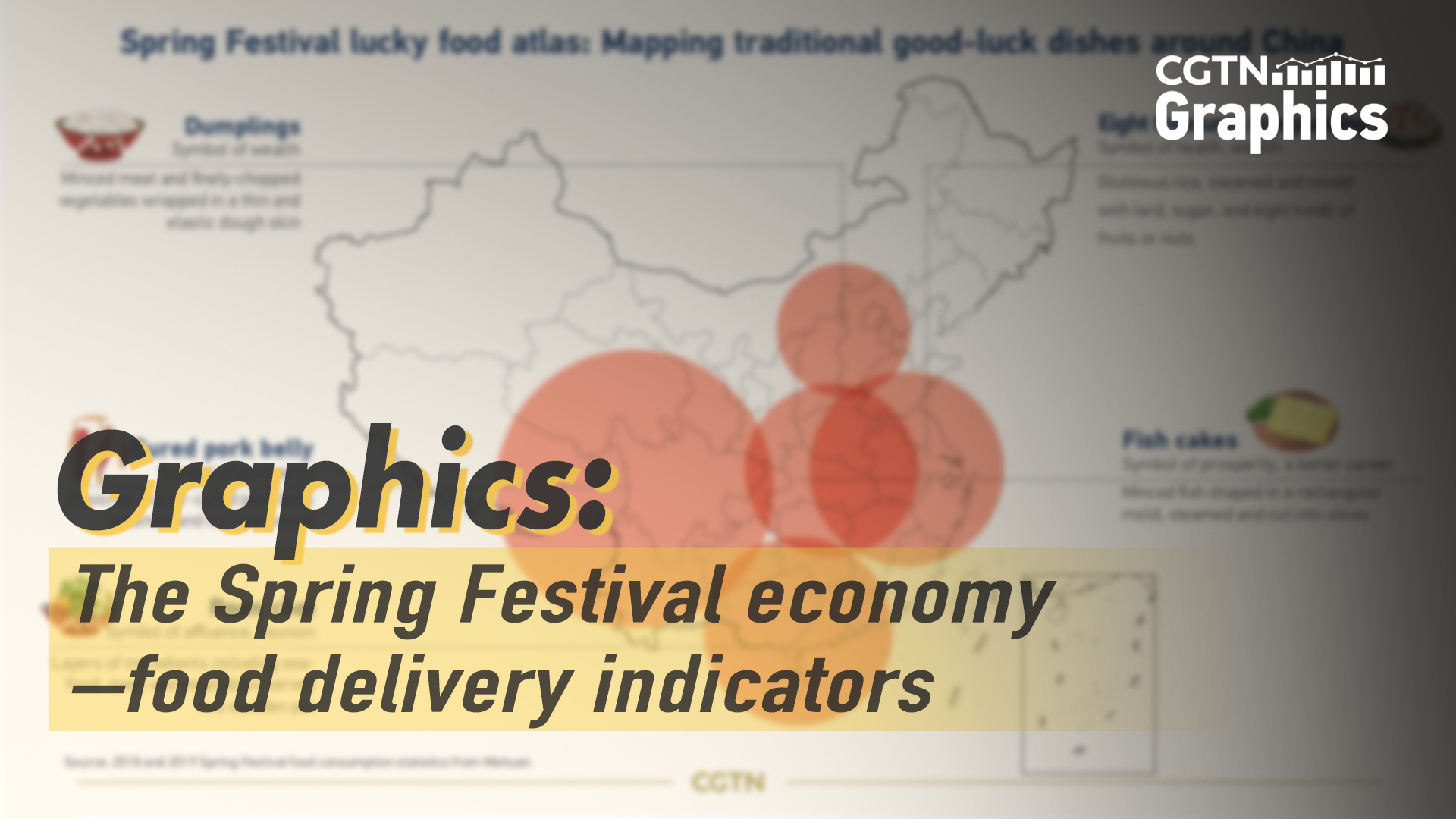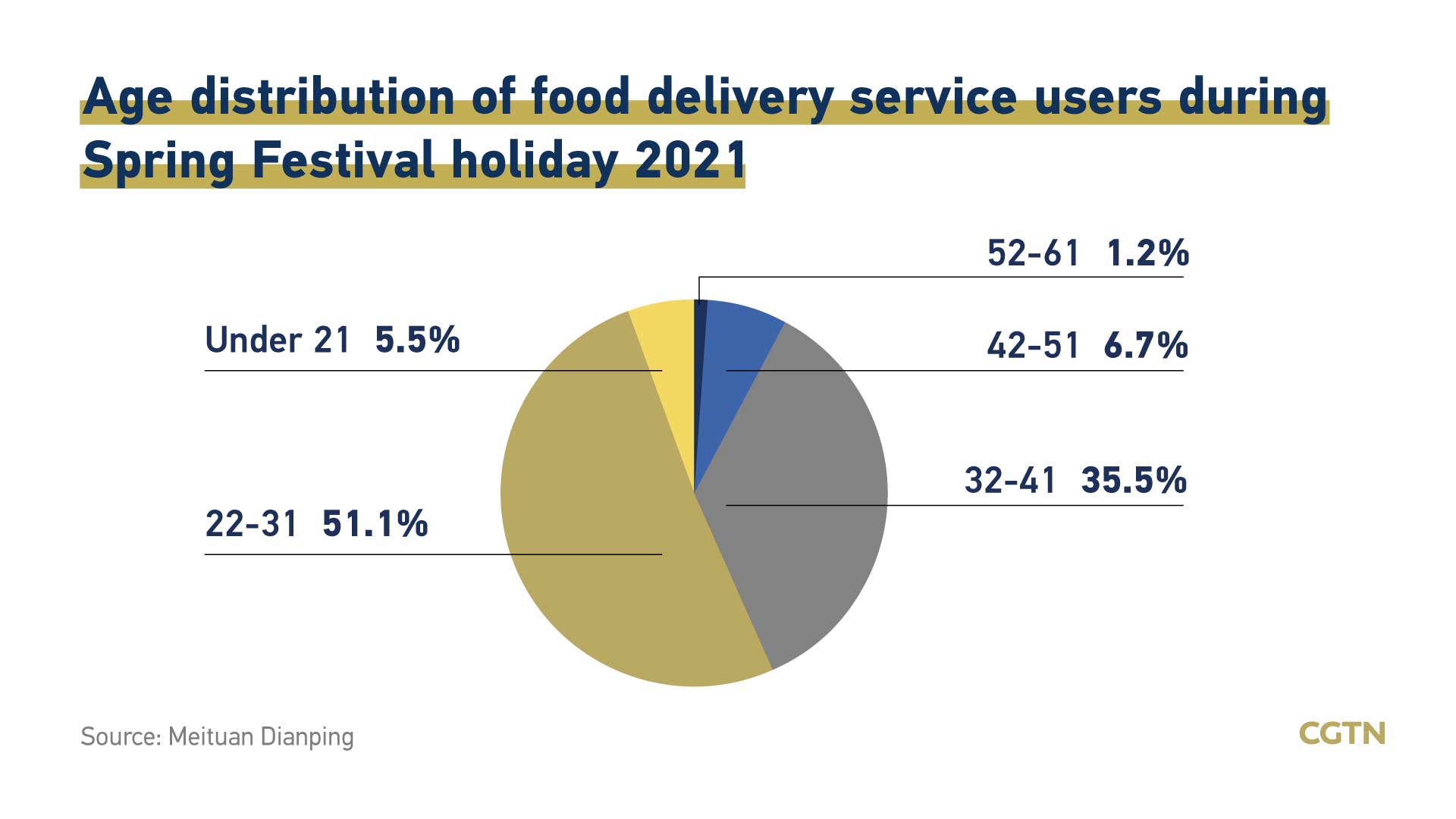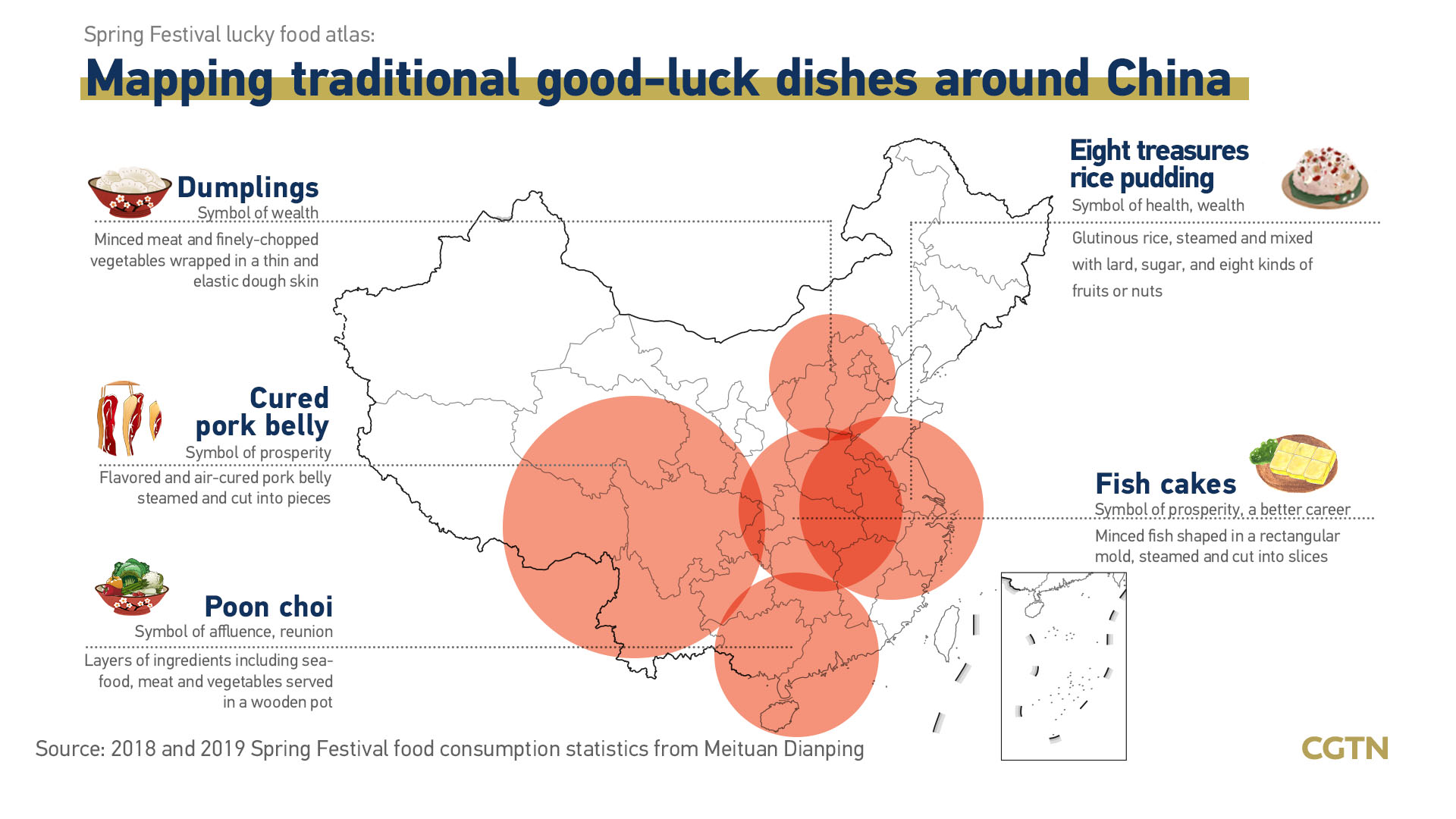
A blue-suited delivery man from Ele.me, a mainstream delivery platform, knocked on the door with a well-packed bubble tea in his left hand. On the paper bag, an attached note read: "My grandma has difficulty walking. If no one answers the door, would you please wait for another minute? I really appreciate it."
This is one of the many orders Ele.me received during the seven-day Spring Festival holiday, starting from February 11.
Meituan Dianping, another delivery platform, posted a 77-percent increase in orders from last year on the Chinese New Year's Eve alone, according to the company's press release.
Due to the COVID-19 pandemic, the growing food delivery business faced severe challenges during the holiday season last year. "The strict epidemic prevention and control measures resulted in shortages on the service supply side and a sharp drop in food delivery orders," according to Meituan Dianping's first quarter financial report of 2020.
The business began to recover after catering services gradually resumed in late February the same year.
With recent COVID-19 clusters across the country ahead of the Spring Festival, China encouraged people not to make "non-essential" trips to their hometowns and spend the holiday in their places of work in a bid to curb the spread of the virus.
Data from China's Ministry of Transport showed a 74-percent decrease in the first 19 days of the travel rush compared to the same period last year.
Responding to the call, many migrant workers chose not to go home for the Chinese New Year, a traditional holiday for family reunions in China. The norm of waiting for homemade dishes at grandma's on Chinese New Year's Eve changed. The family gathering dinner shifted to a meal-for-one away from home. Meituan Dianping witnessed a 68-percent increase in meal-for-one orders during the first three days of the holiday, according to the platform's statistics. Ele.me also saw a similar growth, especially in first- and second-tier cities. In Shenzhen, meal-for-one orders raised 2.5 times year on year.
Besides, remote orders also increased in these cities, according to Meituan Dianping data. Users sent Spring Festival goods and gifts to families through local food delivery services. The most popular items were flowers, nuts, chocolates and fruits.
The statistics also indicated an expansion in the young consumer population during the holiday. More than half of the service users are under 31. Nearly one-third of the consumers are under 25 years old.

As migrant workers staying in the city where they work during the Chinese New Year, 81 percent of the Meituan Dianping consumers placed orders from their regular addresses. In Beijing, the number was 94 percent, 10 percent higher than last Spring Festival holiday season, suggesting more people chose to stay put this year.
In addition to food takeaways, pre-made meals also became the darlings of the holiday, bringing a bite of hometown to the wanderers. Data from Ele.me showed a four-time increase in pre-made products and a two-time increase in pre-made meal combos from February 9-11, the Chinese New Year's Eve.

Although spending the holiday hundreds of miles away from home, people's appetites can hardly be shifted. A traditional good-luck dish and an old-school taste from hometown may ease the nostalgia. Meituan Dianping's food consumption statistics unveiled the popular Chinese New Year dishes in different regions of China.
Dumplings, or jiaozi in Chinese, are widely popular on the Spring Festival in northern China. Since the boat-shaped Chinese dumplings are similar to Chinese silver ingots, the legend has it that the more dumplings you eat, the more money you can make. Dumplings are usually stuffed with meat, vegetables and sometimes seafood.
In southwest China, cured pork belly, or larou, is a must-have dish. The air-cured pork belly is usually steamed and served in slices. "Steam" shares the first word of an auspicious Chinese idiom which conveys a wish to be more prosperous every day. Therefore, steamed cured pork belly is a good-luck dish.
Poon choi, or pencai, a star of reunion meals in southern China, comprises turnip, taro, lotus root, pigskin, fried fish maw, dried oysters, chicken and duck. Each item is separately prepared and layered in a wooden pot. The abundant ingredients symbolize the affluence of the coming year. The scene of the family sitting together around the table sharing the dish also highlights the sense of reunion.
Eight treasures rice pudding, or babaofan, is a popular holiday dessert in eastern China. The first word "ba" of the dish is a magic number for Chinese people. The pronunciation of this word is similar to another Chinese word "fa," which means rich or to thrive in business.
In central China, fish cake, or yugao, is what you can expect on a reunion dinner table. In Mandarin, "fish", or yu, sounds like "surplus," while "cake," or gao, sounds like "high." For that reason, fish cake comes to be a combination of wishes, having surplus at the end of the year and getting higher in position.
Graphic designers: Li Yueyun and Qu Bo
Cover image: Pan Yufei

